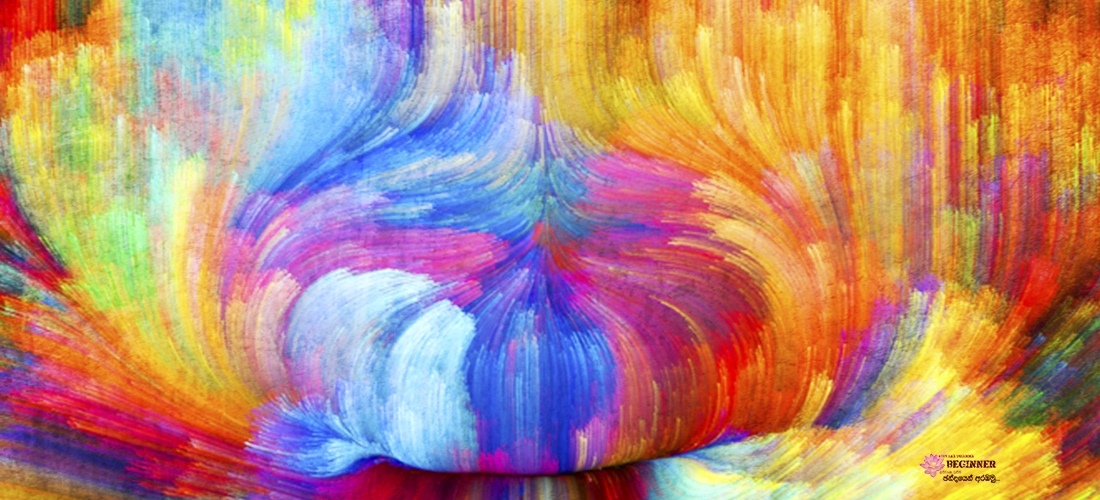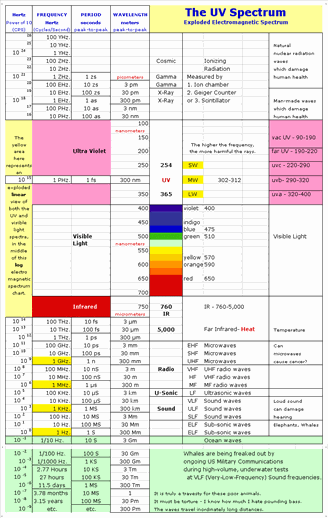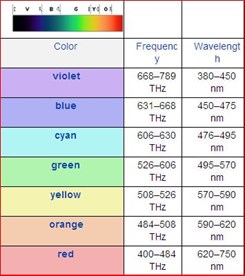
Mystic Colors
Colors! How we can see them? The colors we see are nothing but an effect of the frequencies. If I say in typical science it's like this.
The visible spectrum is the portion of the electromagnetic spectrum that is visible to (can be detected by) the human eye. Electromagnetic radiation in this range of wavelengths is called visible light or simply light. A typical human eye will respond to wavelengths from about 390 to 750 nm. In terms of frequency, this corresponds to a band in the vicinity of 400-790 THz. A light-adapted eye generally has its maximum sensitivity at around 555 nm (540 THz), in the green region of the optical spectrum.
The spectrum does not, however, contain all the colors that the human eyes and brain can distinguish. Unsaturated colors such as pink, or purple variations such as magenta, are absent, for example, because they can be made only by a mix of multiple wavelengths. Have a look at the frequencies and wavelengths chart of the colors.

I just aligned all these facts for you to realize that what we see, hear, smell, taste or feel or think can't identify as real as the reality is far more fascinating than the limited facts we gain through our 5 senses. So it's like all these time we trapped in a hallucination by thinking it's the real world. It's time to wake up right?
Let's talk about these things more deeply so you can know how deep is the purest Buddhist teaching and it doesn't explore something we all know through 5 senses.
Previous page
The Cloud Man
Next page
The moving lines (cartoons)